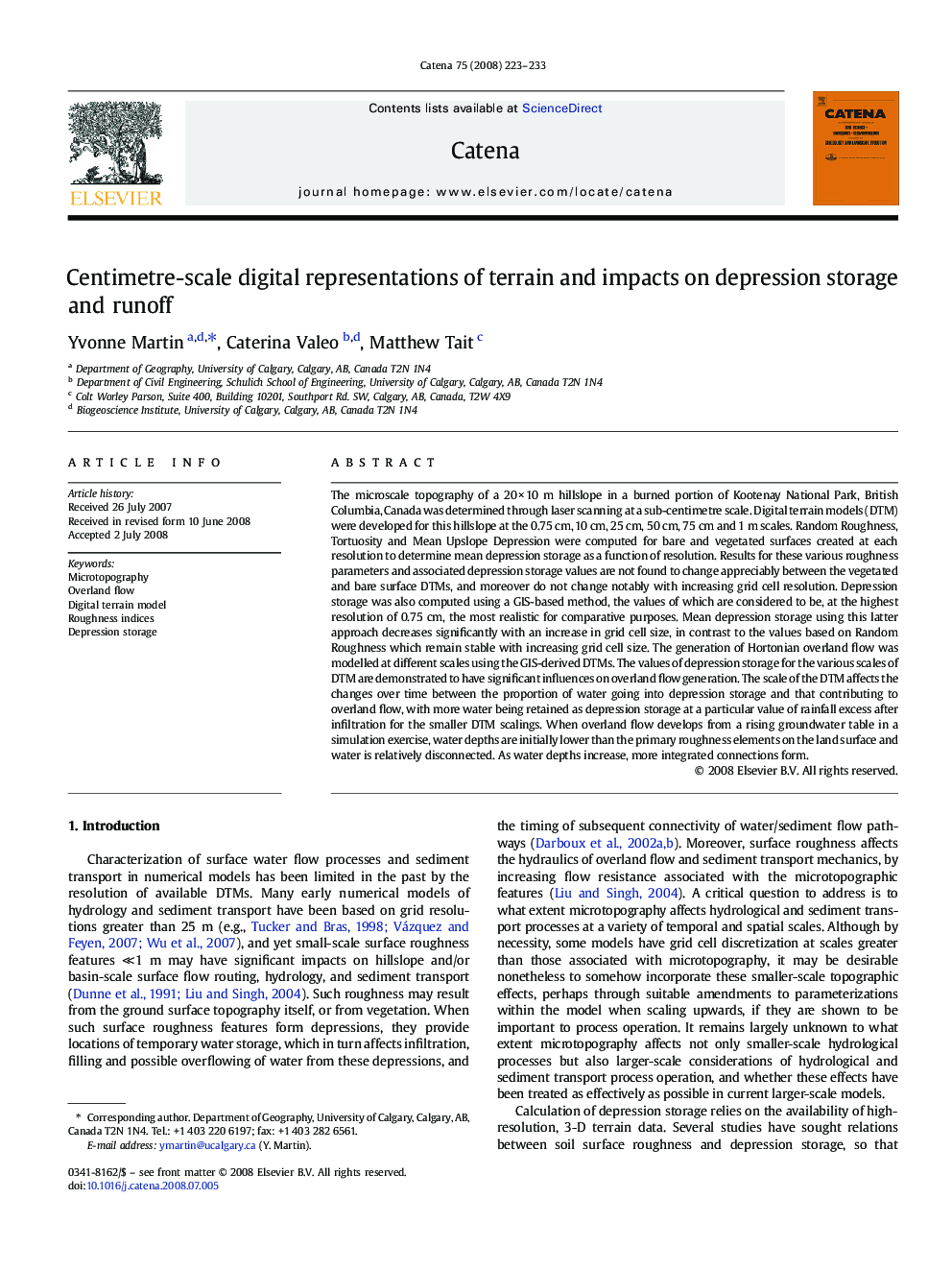| Article ID | Journal | Published Year | Pages | File Type |
|---|---|---|---|---|
| 4572366 | CATENA | 2008 | 11 Pages |
The microscale topography of a 20 × 10 m hillslope in a burned portion of Kootenay National Park, British Columbia, Canada was determined through laser scanning at a sub-centimetre scale. Digital terrain models (DTM) were developed for this hillslope at the 0.75 cm, 10 cm, 25 cm, 50 cm, 75 cm and 1 m scales. Random Roughness, Tortuosity and Mean Upslope Depression were computed for bare and vegetated surfaces created at each resolution to determine mean depression storage as a function of resolution. Results for these various roughness parameters and associated depression storage values are not found to change appreciably between the vegetated and bare surface DTMs, and moreover do not change notably with increasing grid cell resolution. Depression storage was also computed using a GIS-based method, the values of which are considered to be, at the highest resolution of 0.75 cm, the most realistic for comparative purposes. Mean depression storage using this latter approach decreases significantly with an increase in grid cell size, in contrast to the values based on Random Roughness which remain stable with increasing grid cell size. The generation of Hortonian overland flow was modelled at different scales using the GIS-derived DTMs. The values of depression storage for the various scales of DTM are demonstrated to have significant influences on overland flow generation. The scale of the DTM affects the changes over time between the proportion of water going into depression storage and that contributing to overland flow, with more water being retained as depression storage at a particular value of rainfall excess after infiltration for the smaller DTM scalings. When overland flow develops from a rising groundwater table in a simulation exercise, water depths are initially lower than the primary roughness elements on the land surface and water is relatively disconnected. As water depths increase, more integrated connections form.
